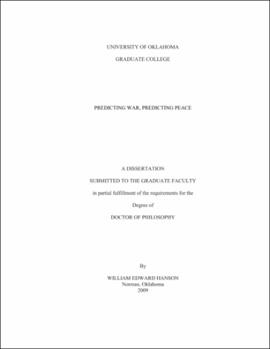| dc.description.abstract | This dissertation examines how the structure of a given situation and the way in which decision makers mentally process information interact to determine decisions. Decision are affected by the surrounding ecology, information stored in memory, and the hypotheses chosen to access information in the surrounding ecology and memory. This theory draws on and extends existing cognitive simulation models to show that judgments, along with observed heuristics, biases and affect can be predicted probabilistically using models of memory processes. A Mathematica multiple-trace simulation of cognitive processes of memory and hypothesis generation which learns and reacts to various opponents: Memory-Based Ecological Model of Relationship Interactions between States, version 2 (MEMORIS-2) is tested in both game-theoretic settings and in a simplified multi-player system of international interaction. Results show that the memory-trace simulation results in equal or better outcomes in both static (PD) and shifting-payoff (alternating PD and Stag Hunt) game theoretic situations than previously-developed strategies and heuristics (e.g., Tit-For-Tat, Grim Trigger, etc.). Analysis of the multi-player international interaction game shows that results show specific reactions to increasing threats and break into definite clusters of results which could be used to probabilistically predict state behavior. The simulation is then used to model two cases: Europe during the period 1885-1915 and the Cold War between 1945 and 1980, with results being compared to the historical record. Results show that the MEMORIS-2 simulation has the ability to probabilistically predict emergent properties in the international system, such as the likelihood of conflict, the players in that conflict, and the structure of alliances. | |
